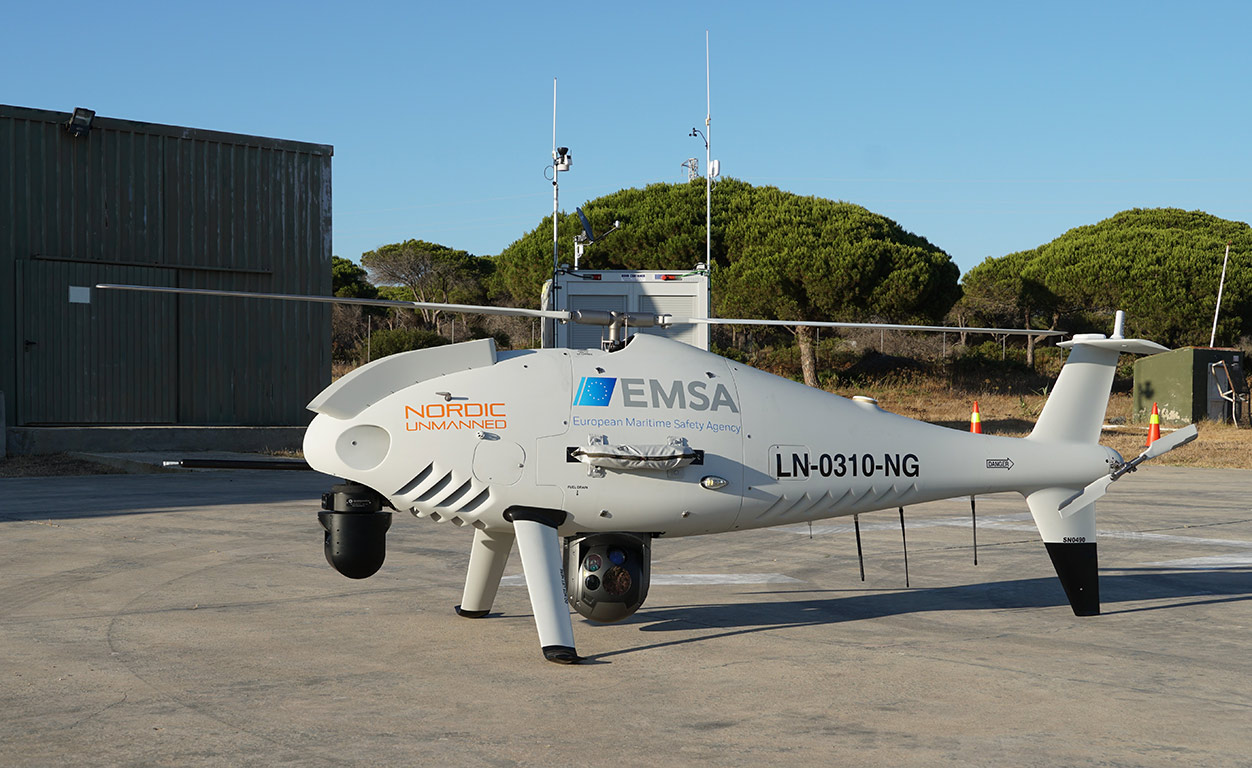EMSA drone operating in the Strait of Gibraltar area for multipurpose maritime surveillance
Date

EMSA’s remotely piloted aircraft is in operation in the vicinity of the Strait of Gibraltar providing the Spanish Ministry of Transport, Mobility and Urban Agenda with the capacity to monitor sulphur and nitrogen emissions of passing ships. The initiative builds on the experience gained during a similar operation which saw the aircraft’s special sniffer capabilities used for emissions monitoring. While the Merchant Marine can use the measurements taken to check the passing ships’ pollutant compliance, the flights can also be directed to support the Spanish Maritime Safety Agency (SASEMAR) for search and rescue.
Spanish and international waters in the area around the Strait of Gibraltar are once again being monitored to check air pollution levels from emissions of nitrogen oxide and sulphur oxide released by passing ships. The pollutant data gathered actively supports the monitoring of compliance with existing regulations and in doing so can help to reduce the harmful effects on human health and the environment.
Emissions monitoring is one among several purposes for which the aircraft can be deployed within the area of operation; other complementary tasks include pollution detection, suppression of trafficking and smuggling operations, fisheries control, and vessel traffic management.
The Remotely Piloted Aircraft System (RPAS) used is a Camcopter S100 unmanned helicopter which is operated by EMSA’s contractor, Nordic Unmanned. The RPAS is equipped with an emissions sensor from the contractor Explicit. This analyses the gas samples taken as the RPAS flies through the exhaust plume of the ship’s funnel or stack. Calculations are then made to determine sulphur and nitrogen levels. Indications of non-compliance can trigger an inspection at the next port of call to determine whether an infringement has taken place.
This is the second emissions monitoring campaign to take place in the area, chosen for its proximity to busy shipping lanes, within the flight range of the aircraft, as well as for the expertise of the personnel monitoring maritime traffic in the area.
Emissions surveillance operations such as these will reinforce the recent approval of the Mediterranean Sea as an emission control area by the International Maritime Organization which is expected to come into force in 2025.
ABOUT RPAS
Remotely Piloted Aircraft System (RPAS) services are offered free to all EU member states by EMSA. They have been developed to assist in maritime surveillance operations and ship emission monitoring, and can operate in all seas surrounding the European Union. RPAS services can provide support to traditional coast guard functions, including search and rescue and pollution prevention and response. The services are offered to member states individually and as part of EMSA’s regional RPAS strategy, which allows multiple coast guard functions in several EU member states to be supported by one or more RPAS services. See where EMSA is flying.
ABOUT EMSA
The European Maritime Safety Agency (EMSA) is a decentralised agency of the EU, based in Lisbon, Portugal. EMSA serves the EU’s maritime interests for a safe, secure, green and competitive maritime sector, delivering value for member states through support for pollution prevention and response, maritime surveillance, safety and security, digitalisation and the provision of integrated maritime services, and technical assistance.
Any requests for further information can be sent to:information@emsa.europa.eu
Files
-
Categories
-
Tags
